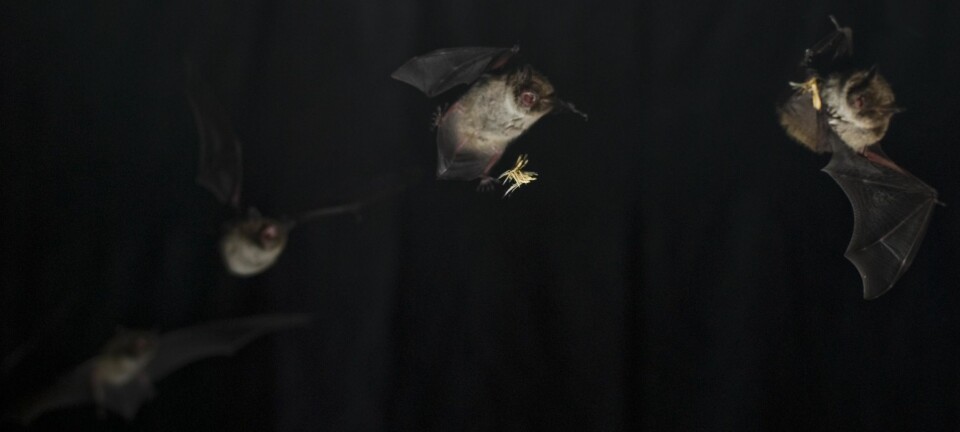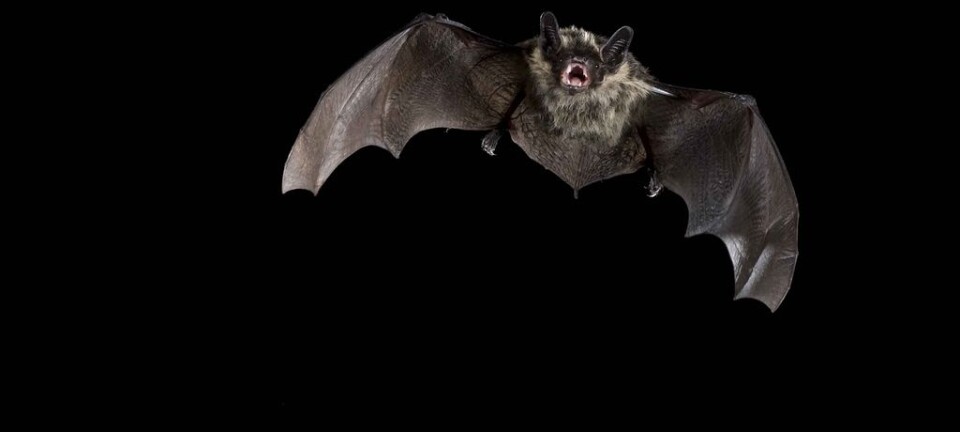An article from Norwegian SciTech News at NTNU
How bats fly
Bats fly at night to avoid being eaten by birds of prey. Despite poor visibility, darkness and ambient noise, bats capture their prey with amazing precision.
Denne artikkelen er over ti år gammel og kan inneholde utdatert informasjon.
Every night a bat puts in 600-700 kilometres of airtime. Flying low, the animals catch insects at speeds of around 40 metres per second. At night the bat uses its hearing to navigate its way to prey.
Bats catch insects continuously using echolocation, an advanced navigation system.
The bat emits ultrasonic waves with very high frequencies. Its calls are pitched at 20-100 kilohertz, a frequency that is too high-pitched for humans to hear naturally.
Their sounds are reflected in the environment, hitting various objects and returning to the bat as echoes. The echo signals enable the bat to form a mental map of its surroundings.
Like using a flash
“You can compare echolocation to using a flash in a dark room," says Nadav Bar, associate professor in NTNU’s Department of Chemical Engineering who has recently researched bats.
"The flash hits various objects in the room that light up and are reflected back to the eye of the observer. The bat uses sound in the same way to get an overview of the environment, but the potential sources of error are far greater when using sound.”
Different daytime flying pattern
When bats on rare occasions fly during the day, they use their vision to navigate and fly in a straight line to their destination.
Night-time flights are more elaborate than daytime ones. Bats continuously rise and dip in curved flight trajectories, using large movements to propel themselves.
Filtering out noise
Noise from rain, wind and snow disrupts echo signals, making it harder for the bat to form a picture of its surroundings. The bat’s big night-time movements also generate sound that disturbs the echo signals.
But bats manage to catch their targeted prey despite poor weather conditions. Bar has recently researched how this is possible.
“Bats are able to filter out the ambient noise around them using low-pass filtering. Useless sounds are cleared out, which makes conditions more transparent. The bat also has a highly developed sensorimotor system, which controls the mammal’s movements. These characteristics enable the bat to move quickly and with incredible precision,” says Bar.
Measures the angle en route
Bats are more careful in their movements at night than during the day, and they are always at the ready to change direction quickly to avoid impending danger. Bats also have the very useful navigational ability to measure how fast the flight angle is changing as they approach their targeted prey.
Bar performs all his bat research abroad. He has been in Israel, the USA, Germany and Poland. Bats are nocturnal and often inhabit caves or unoccupied buildings, making them difficult-to-access research subjects. Research laboratories also need to be large enough for bats to fly around.
Bar is responsible for education in the new master’s programme in Systems Biology in NTNU’s Department of Chemical Engineering. Students in this program learn to model, create simulations and study the animal world, bacteria and genetics. Bar was lead author of an article about how bats fly published in PLoS Biology.
































